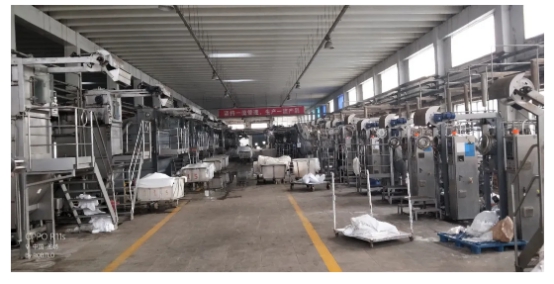I have called Didi several times recently, and there is a Didi driver who is very impressive. He is a cloth merchant and has his own store in the market. However, due to poor business recently, he closed the door and opened Didi directly.
According to him, the reason why the cloth collection business is poor is not because There is no source of gray fabric or finished products. On the contrary, they have abundant such resources, but their customers have no orders. It turns out that he took back the processed fabrics, and a considerable part of them were sold at low prices to some backward and underdeveloped regions such as Africa, South America, and Southeast Asia. But this year due to the epidemic, customers from these countries are unable to come to China. In a sense, it can be said that their major customers have also canceled and postponed orders.
When the channels for selling fabrics are not smooth, the business of these cloth dealers cannot be considered good.
Dealing fabric merchants are no longer active, and conventional fabric inventory is difficult to digest
As long as there is a sales department in the market, if there are not a few cloth dealers to greet them every day, It can basically be concluded that this store location is not suitable. Cloth processing merchants walk around the streets every day, trying their best to find various storefronts, warehouses, and factories, and then go in and ask if there is any cloth in stock that needs to be processed.
Gradually, our subconscious mind automatically regards dealing with cloth merchants as the last step in inventory. The solution is, if the order goes bad, sell it to the cloth dealer; if the order goes too much, sell it to the cloth dealer; if the inventory gets bigger, sell it to the cloth dealer… But this logic may have to change this year, after all, the dealer Cloth merchants are also businessmen, and businessmen are all seeking profits. No one is willing to do this kind of business of turning cash into fabrics, and it is not known when the cash will be realized again.
This year’s epidemic has profoundly affected the entire fabric weaving market. The cold winter lasted for a year. Every factory has high inventory, especially conventional weaving companies. . 40 looms, 1.5 million meters of 190T, 210T inventory; 70 looms, 3 million meters of fabric inventory; 500 looms, 10 million meters of polyester taffeta inventory… This kind of inventory lasts for dozens of days, or even hundreds of days The situation of natural output is very common.
In the past, if I posted a notification about selling goods at a low price in the circle of friends, there would always be someone. It has never been difficult for some people to come over and digest the inventory. As long as the price is low enough, there will always be people who want it. Especially when dealing with fabric merchants, it always feels like you want any kind of fabric and accept any goods, as long as you have it and are willing to sell it, but this year this channel is obviously broken.
There is no chance for market products, and the future of conventional fabrics is uncertain
If you want to say what kind of order can quickly consume the inventory on the market, it must be a large-volume market order. Order quantities of hundreds of thousands, millions, or even tens of millions are very common, and market orders are mostly of common fabric varieties. However, in recent years, market orders have become picky, and not all types of fabrics can be used. It caught his eye.
In the recent market, various dyeing factories have conquered cities and territories, and many Dyeing factories have shown busy queuing, but the operating rate of weaving companies in the market has been declining, and some factories have even put the Spring Festival holiday on their agenda. This situation occurs mainly because most of the current market orders tend to be elastic fabrics. T400 is packed in vats in dyeing factories, long queues of high-elastic fabrics are being finalized, and trucks with four-sided elastic are shipped…
These fabrics are related to conventional polyester taffeta, pongee, and imitation silk Not big. Elastic fabrics have replaced these conventional fabrics to some extent. Old products have almost no chance to significantly clear their inventory. The continuous backlog of inventory may become more serious in the future.

Due to the lack of orders, fabric dealers are no longer interested in various inventories. Even if they occasionally collect some inventory, the price is estimated to be half the fabric cost, and the same is true for market orders. No longer giving regular fabrics a chance to stock up. Just relying on the few orders in the market, a large amount of conventional fabric inventory will have a long digestion process. In this process, many textile mills and enterprises may transform to produce other fabric products to avoid the continuous accumulation of old varieties.
</p







